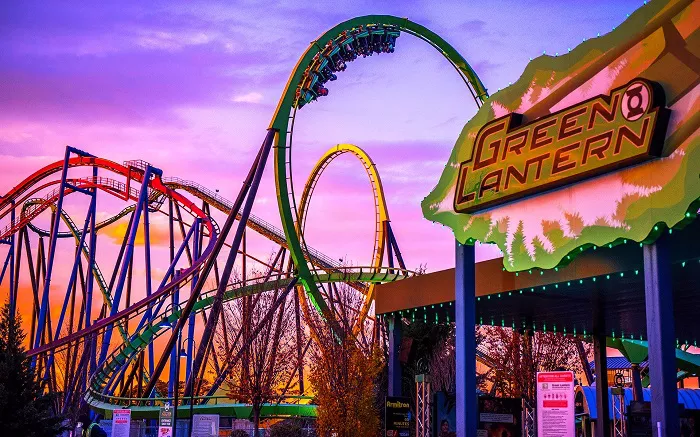With the permanent closure of Six Flags America in Prince George’s County, Maryland, earlier this year, questions loom over the future of the 500-acre property. While the amusement park’s operator has pledged to market the site for redevelopment, local leaders and experts warn that without proactive planning, progress could be years in the making.
Similar scenarios have played out elsewhere. In Aurora, Ohio, the former site of Geauga Lake amusement park, closed in 2007, and a nearby water park shuttered in 2016, remained dormant for years. Aurora Mayor Ann Womer Benjamin said it took persistent outreach and negotiation to finally spark revitalization efforts.
“We had our lawyer and our team contact them pretty regularly,” Womer Benjamin told WTOP. “It was kind of moving them along.”
Rezoning the land for residential and commercial use required extensive time and voter approval. Eventually, Aurora reached a deal with neighboring Bainbridge Township and acquired several lakefront acres to develop a public park with a beach. But the path forward was far from smooth, with community debates over redevelopment goals.
Mayor Womer Benjamin advised Prince George’s County officials to act decisively.
“We had to be proactive at certain points,” she said. “The business that abandons the park will likely prioritize its own interests. They’re not necessarily going to be concerned about what happens to that abandoned property in that community.”
The cautionary tale echoes in New Orleans, where Six Flags closed in 2005 after Hurricane Katrina. Despite the city acquiring the land a few years later, it languished for over a decade. Only recently have major redevelopment efforts gained momentum, spearheaded by Henry Consulting, which co-owns the site.
“We’ve had a lot of challenges,” said Troy Henry, head of Henry Consulting. “Some of them are municipal hurdles, others are physical challenges. There’s a healthy skepticism, too — it’s been dormant for so long.”
Henry emphasized the importance of dismantling abandoned amusement park infrastructure early, as lingering rides delay redevelopment and raise cleanup costs. In New Orleans, the removal of the last rides only occurred recently.
“The first thing you’ve got to do is spend the money to clean up behind a major corporation who decided to leave blight in the hands of the public,” Henry said.
He advised Prince George’s County leaders to assert pressure on the site’s owners to accelerate progress, stressing that private developers often prioritize profit over public interest.
“If you’re the property owner, you’re going to meet your own economic interests,” he said. “In all likelihood, they’re going to pursue something financially beneficial — which is their right.”
In New Orleans, a youth sports complex, water park, arcade, and movie studio are slated to rise where roller coasters once stood. Henry believes it’s that kind of compelling vision that can unify public and private efforts.
He also urged residents in Prince George’s County to remain engaged and vocal, especially as redevelopment plans require zoning changes and regulatory approvals.
“Whoever owns the property, if they want to do something counter to the community’s interests, they’re going to face challenges,” Henry noted. “And that’s where the voice of the people is.”
Both Henry and Womer Benjamin agree that early alignment among stakeholders is crucial for momentum.
“You’re not necessarily going to agree on everything,” Womer Benjamin said. “But you can at least come to perhaps a few common points that will help you move forward.”

